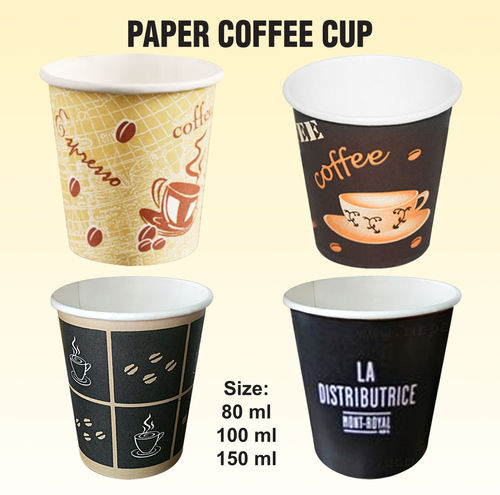Single-wall paper cups really are a ubiquitous portion of modern life, within coffee shops, offices, and fast-food chains worldwide. These disposable cups offer convenience, affordability, and simplicity, which makes them a popular selection for serving cold and hot beverages. However, as environmental concerns grow, the sustainability of single-wall paper cups has come under scrutiny. This article explores the features, benefits, and challenges of single wall paper cups, in addition to potential alternatives and innovations in the market.
What Are Single-Wall Paper Cups?
Single-wall paper cups are disposable containers created from paperboard with a thin polyethylene (PE) or polylactic acid (PLA) lining to prevent liquid leakage. Unlike double-wall cups, which may have an extra layer for insulation, single-wall cups are lightweight and cost-effective, causing them to be ideal for everyday use.

Key Features:
Material: Paperboard + PE/PLA coating
Structure: Single layer (no extra insulation)
Common Sizes: 4 oz to 20 oz (coffee cups, soda cups, etc.)
Uses: Hot and cold beverages (according to lining)
Advantages of Single-Wall Paper Cups
1. Convenience & Hygiene
Single-wall paper cups are equipped for one-time use, eliminating the necessity for washing and lowering the risk of cross-contamination—a crucial factor in food service and healthcare settings.
2. Cost-Effective
They are less costly to produce than double-wall or reusable cups, making them a preferred option for businesses with high-volume sales, for example coffee chains and fast-food restaurants.
3. Customizable Branding
Businesses often print logos, slogans, and styles on these cups, turning them right into a marketing tool.
4. Lightweight & Portable
Their thin structure make them possible to carry and stack, reducing transportation costs.
Environmental Concerns
Despite their convenience, single-wall paper cups pose significant environmental challenges:
1. Recycling Difficulties
Most single-wall cups have a plastic lining which makes them challenging to recycle. Traditional recycling facilities often separate the paper from your plastic, bringing about higher processing costs.
2. Waste Generation
Billions of paper cups end up in landfills each year, adding to pollution and resource depletion.
3. Deforestation Impact
Paper production depends on wood pulp, raising concerns about sustainable sourcing and deforestation.
Sustainable Alternatives & Innovations
To address environmental concerns, manufacturers and businesses are exploring eco-friendly solutions:
1. Biodegradable & Compostable Linings
PLA (plant-based plastic) linings allow cups to break down in industrial composting facilities.
2. Reusable Cup Programs
Some coffee chains encourage customers to take their own cups or offer deposit-based reusable cup systems.
3. Improved Recycling Technologies
New separation techniques are increasingly being developed to efficiently recycle PE-coated paper cups.
4. Alternative Materials
Cups made out of bamboo, sugarcane bagasse, and other sustainable fibers are gaining popularity.
Single-wall paper cups remain constantly working out in the food and beverage industry because of their practicality and affordability. However, their environmental footprint requires urgent innovation and responsible consumption. By adopting biodegradable materials, improving recycling systems, and promoting reusable alternatives, businesses and consumers might help reduce the ecological impact of disposable cups.
Would you prefer recommendations for specific eco-friendly cup brands or further details on recycling processes? Let me know how I will assist!
Comments on “The Increase of Single-Wall Paper Cups: Comfort, Sustainability, and Challenges”